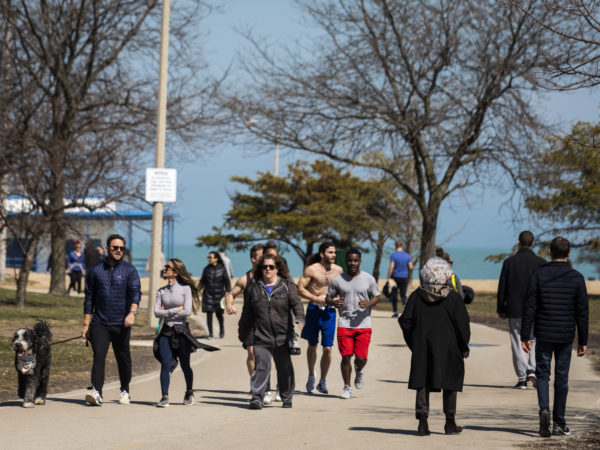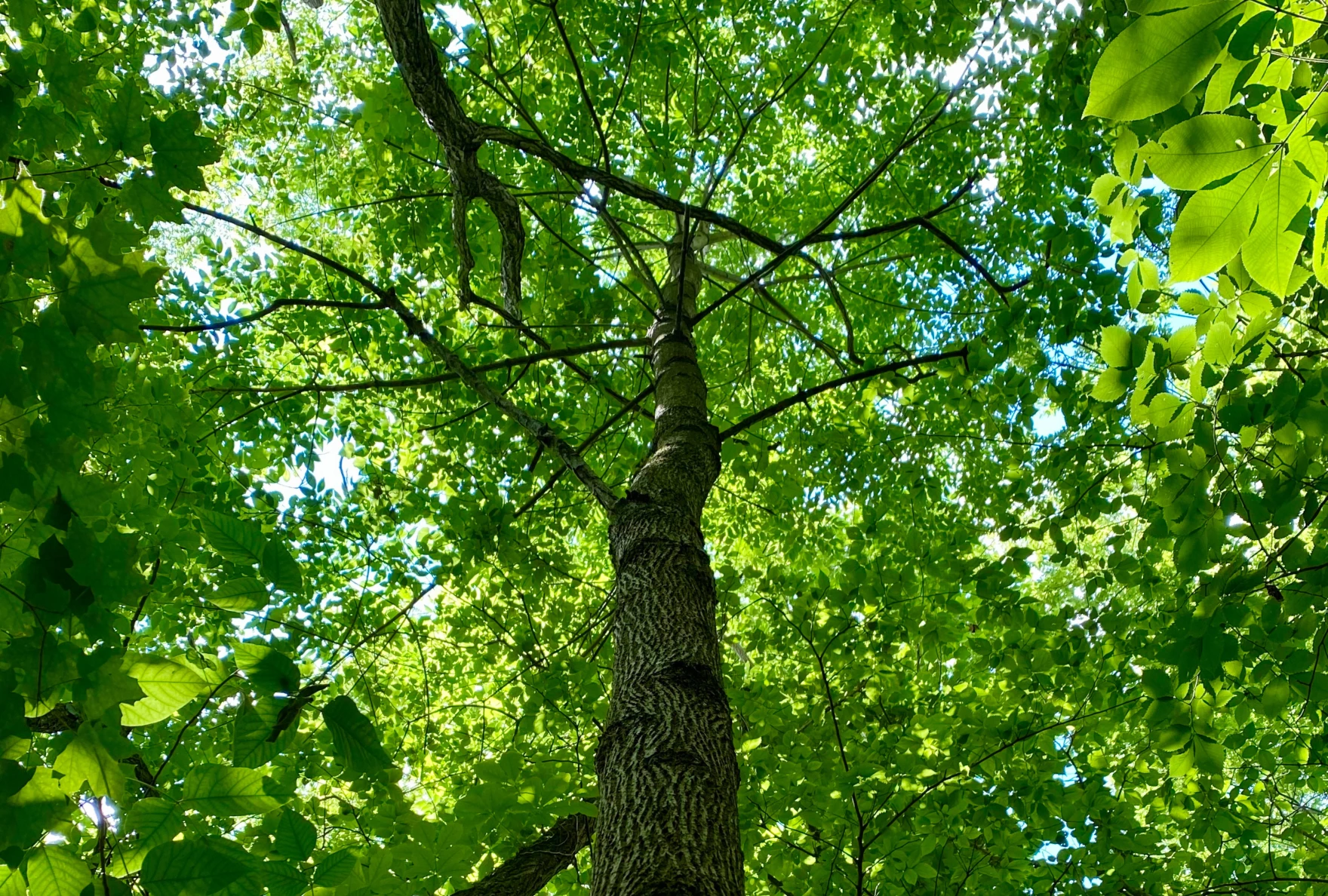
Points North is a biweekly podcast about the land, water and inhabitants of the Great Lakes.
This episode was shared here with permission from Interlochen Public Radio.
Kathleen Knight was doing some research in a forest in Ohio. It was 2006, and she was surrounded by hundreds of healthy ash trees. But when she returned three years later, it was a completely different scene.
“And that was kind of our moment of shock saying, ‘Wow, they’re all dead,’” Kathleen remembered.
A destructive, invasive beetle, emerald ash borer, was wiping out ash trees. First across the Great Lakes region and, eventually, all over North America, where there are billions of ash. Ash trees filter groundwater, provide habitat for all sorts of plants, animals, and insects. Indigenous people depend on ash to make baskets, and it’s used for other things like baseball bats and tool handles.
Kathleen remembers looking at the dead trees and feeling depressed.
“We had all these beautiful ash forests, flood plains with huge ash trees,” she said. “Then we watched all of these trees die; we watched those ecosystems change.”
Kathleen left the dead trees, and headed back to her car. That’s when she spotted a single ash tree, alive and thriving. At first she was really confused. Why did this tree survive? She had to find the answer to that question, because it could save an entire species from extinction.
Credits:
Producer / Host: Dan Wanschura
Editor: Morgan Springer
Additional Editing: Ellie Katz, Michael Livingston, Peter Payette
Music: Blue Dot Sessions
Transcript:
DAN WANSCHURA, BYLINE: This is Points North. A podcast about the land, water, and inhabitants of the Great Lakes. I’m Dan Wanschura.
(sounds of walking in the woods)
One day Kathleen Knight is walking through a forest in northwest Ohio. She’s a research ecologist for the United States Forest Service. So, she likes to say she gets paid to take walks like this.
KATHLEEN KNIGHT: I have a moment almost every day in the field where I’m like, ‘Trees are awesome and amazing.’ They do so many amazing things.

Kathleen Knight, an ecologist with the United States Forest Service, shown here talking to Points North host Dan Wanschura (credit: Nick Loud/The Boardman Review)
WANSCHURA: It’s 2006. And all around her are these big, beautiful ash trees. You know, tall trunks with lush green canopies at the top. These trees are thriving. She collects some data and heads out.
Then three years later, Kathleen is back at this same forest – but it’s a completely different scene.
KATHLEEN KNIGHT: And that was kind of our moment of shock saying, wow, they’re all dead.
WANSCHURA: Hundreds and hundreds of dead ash trees as far as the eye could see. Back then, this was happening to ash trees all over the Great Lakes region. All because of a small invasive bug called the emerald ash borer.
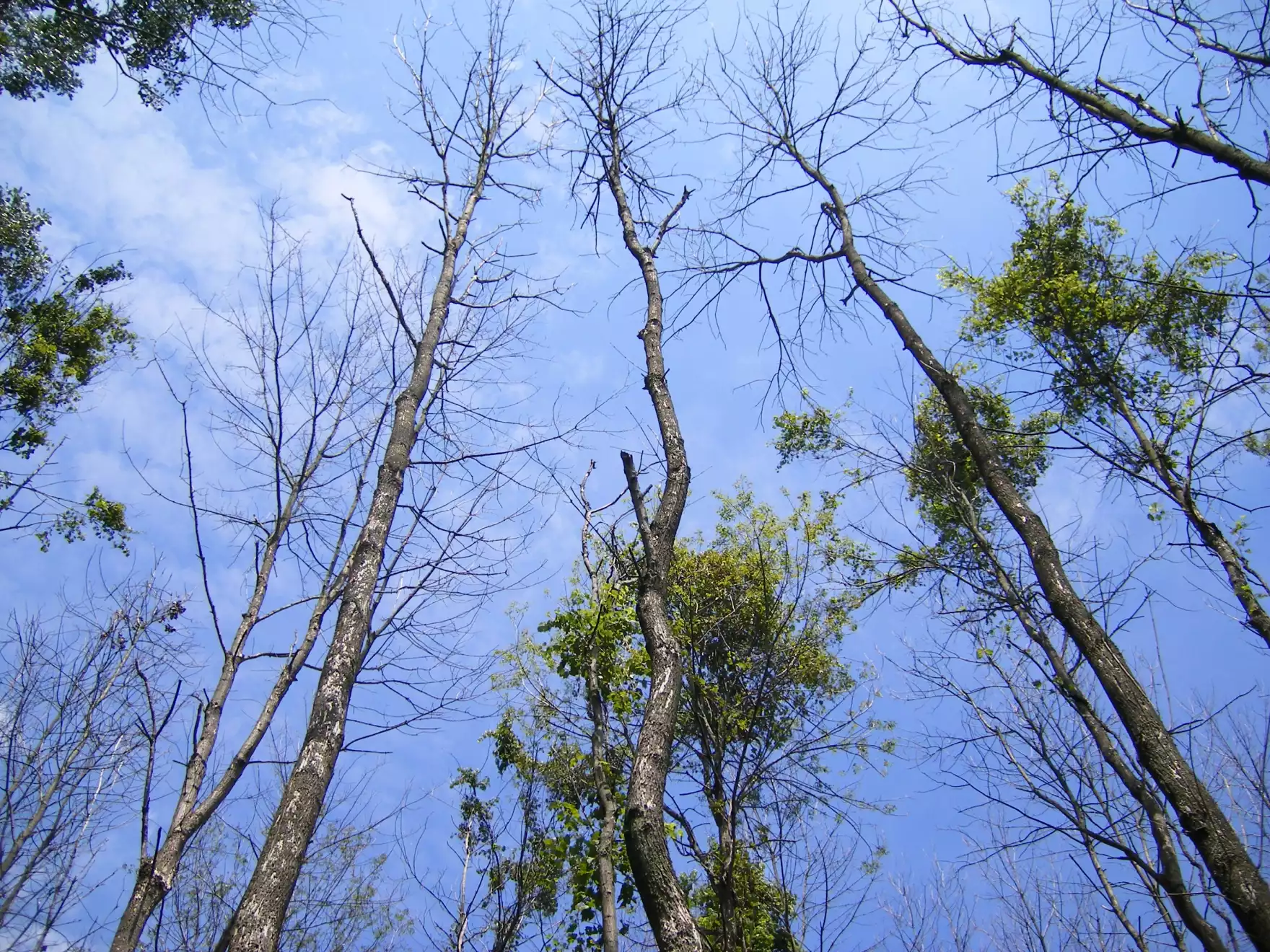
Dead ash trees in Swanton, Ohio. Today, this floodplain area is no longer a forest since there were no trees there to replace the ash. (credit: Kathleen Knight/United States Forest Service)
KNIGHT: It was some really depressing research early on because we had all these beautiful ash forests, flood plains with huge ash trees. … And then we watched all of these trees die. We watched those ecosystems change.
WANSCHURA: There are billions of ash trees all over North America. Ash trees filter groundwater, they give habitat to all sorts of plants, animals, and insects. Indigenous people depend on ash to make baskets, ash is used for things like baseball bats and handles for tools.
KNIGHT: And to see it disappear so quickly and change so quickly, it is– it’s heartbreaking.
WANSCHURA: But Kathleen and her colleagues have a job to do. They gather a bunch of data from these dead ash trees: they measure their trunks, look for emerald ash borer exit holes, and then they pack up their gear and head back to their cars.
KNIGHT: We were pretty quiet on the walk back out and as we’re walking across the bridge. … I think it was one of our interns … who spotted the tree. …He was like, ‘Hey, is that an ash?’
And we all stop and look at this tree and that’s an ash. It’s definitely an ash. It’s healthy. It’s full of green leaves. It looks great. It was really this moment of confusion. ‘How, how is this tree possibly … existing after what we’ve seen all day long here?’
We knew it was big. We knew it was big to find a surviving tree.

A photo of the first lingering ash Kathleen Knight’s team found in 2009, at Oak Openings Preserve Metropark in Swanton, Ohio. Pictured are Bob Long, Charlie Flower, and Kyle Costilow. (credit: Kathleen Knight/United States Forest Service)
WANSCHURA: Now they had to figure out why it survived. Because that answer might save an entire species from extinction.
That’s coming up right after the break.
(sponsor messages)
WANSCHURA: The emerald ash borer, or EAB for short, was first found in North America just outside Detroit, Michigan. It was more than 20 years ago in 2002.
DETROIT PBS SHOW: This is a story of death and destruction. It’s about an invasion.
WANSCHURA: That’s a clip from a Detroit Public Television program.
DETROIT PBS SHOW: It’s the story of a desperate fight against a little emerald green bug from Asia that’s killing millions of shade-giving ash trees like these. As you’ll see at the end of this program, these trees are doomed.

The emerald ash borer. (credit: Dr. James E. Zablotny/United States Department of Agriculture)
WANSCHURA: The little beetle arrived on wood packing material in cargo ships or airplanes from China.From there, it spread quickly. The bugs have wings and can fly short distances, but people are the main way they get around.
OHIO PUBLIC SERVICE ANNOUNCEMENT: Do you know what’s in your firewood? Stop the spread of emerald ash borer. Don’t move firewood.
WANSCHURA: Now, EAB is found in 36 states and five Canadian provinces. Its population hits ash trees in waves. Parts of the Great Lakes region are in a second wave right now.
(sounds of walking in the woods)
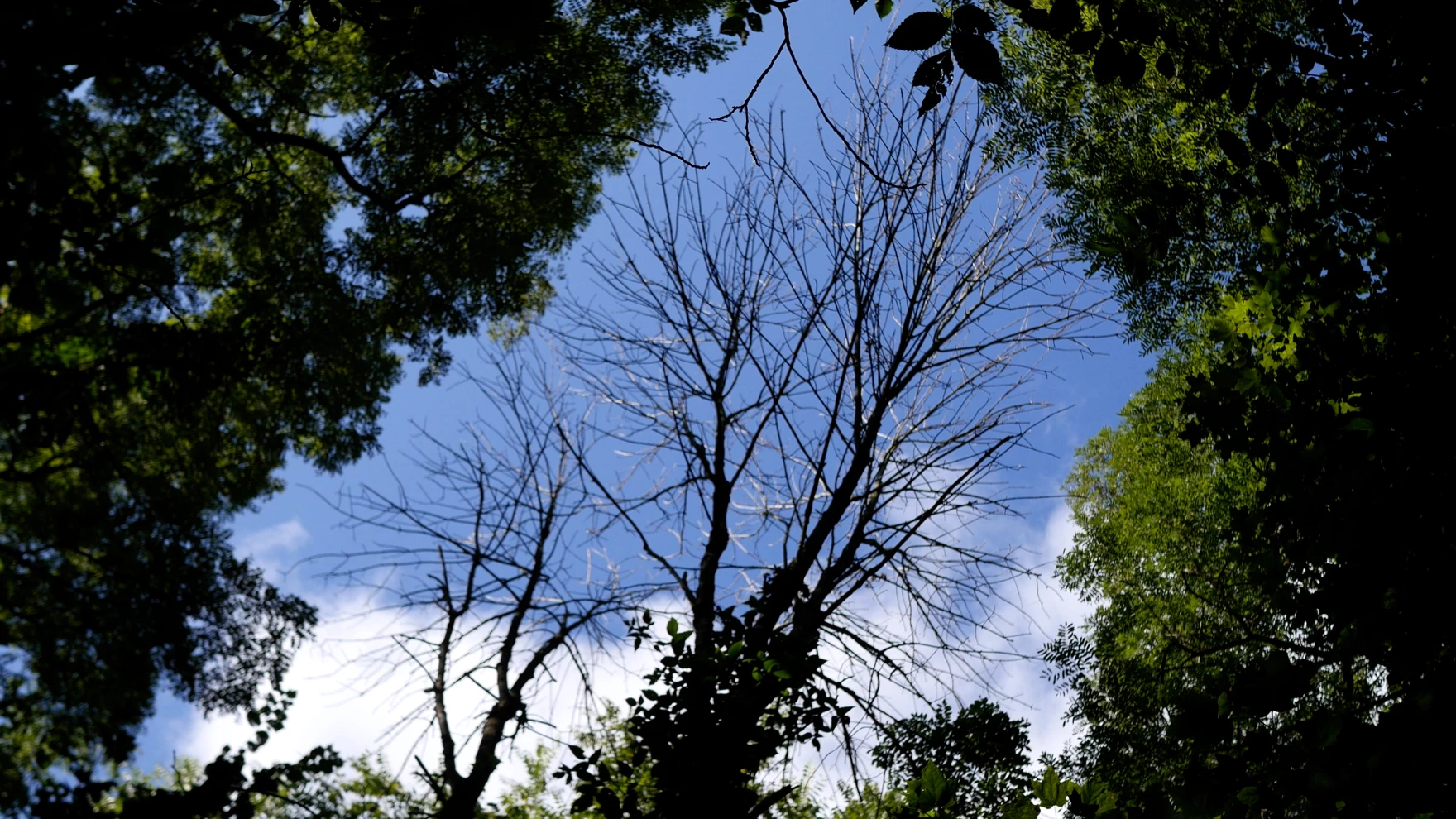
A dead ash tree killed by the second wave of emerald ash borer in Seymour Nature Preserve in Delaware, Ohio. (credit: Nick Loud/The Boardman Review)
Kathleen is seeing the effects of that here in central Ohio. She’s got a tan forest service baseball hat on and a backpack with a water bottle and a can of bug spray sticking out of it. She spots an ash tree and walks up to it.
KNIGHT: So this is one of our larger ones. It died too, and you can actually see the canopy of the dead tree. That’s a very recently killed ash that died during the second wave. And I’m going to see if I can find some galleries here for you under the bark – if I can peel back.
WANSCHURA: The real damage done by the emerald ash borer is done by its larvae. They bore just under the bark, and make these squiggly looking tunnels. Kathleen pulls back a little bit of the bark…
KNIGHT: Oh, you can already see a few up here … So as the emerald ash borers create these tunnels, if you get enough emerald ash borers, they basically cut off that circulatory system and girdle the tree, and it can’t get water and nutrients transported up to the canopy. And that kills the tree fairly quickly.
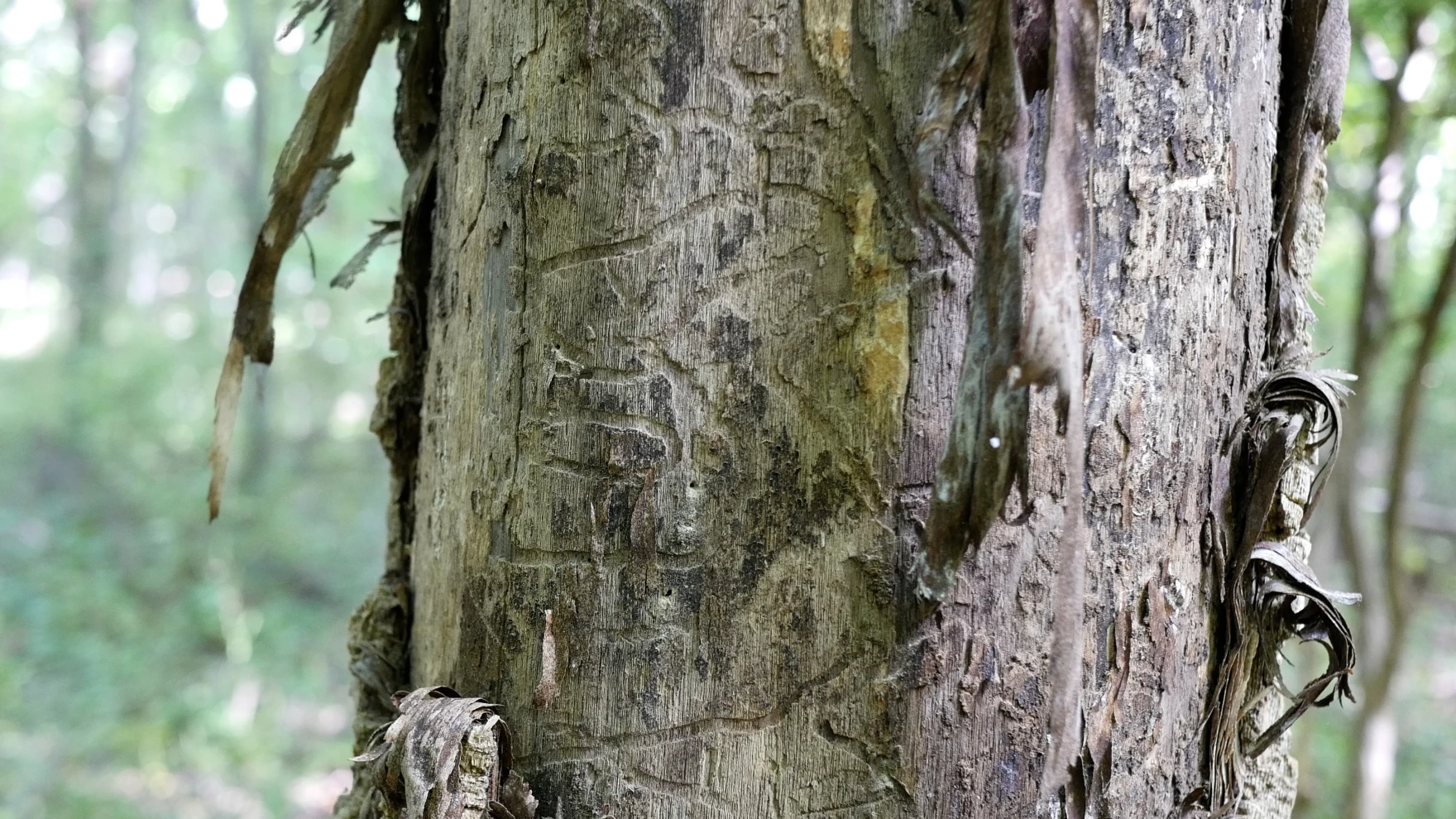
Emerald ash borer larvae make these serpentine-shaped tunnels just inside the bark. This disrupts the tree’s circulatory system. (credit: Nick Loud/The Boardman Review)
(sounds of walking in the woods)
WANSCHURA: As EAB devastated ash trees in North America researchers scrambled to find a solution. Early on they tried cutting down large swaths of trees to create a sort of firebreak to stop the spread.
Then they tried insecticides. Those can work to save a small number of trees, or maybe one in your yard, but not a whole forest.
Later, the focus shifted to tiny wasps from Asia, which kill emerald ash borer eggs and larvae. They help, but don’t completely get rid of EAB.
Overall, the outlook for ash trees in North America was still really dire.
Which brings us back to that moment when Kathleen finds that lone surviving ash tree. She looks at it and wonders if she’s staring at another possible solution. But for her to figure out how this tree survived, Kathleen has to find more of them.
So in 2010, she puts together this team and they go on this mission to see if they can find more of these surviving ash trees. And they do.
One of the people Kathleen is most excited to tell is Jennifer Koch, a geneticist with the U.S. Forest Service. Jennifer has been working with ash trees for so long she’s now allergic to them.
JENNIFER KOCH: It’s like poison ivy to me.
WANSCHURA: Oh, wow. Wow. That bad, huh?
KOCH: Yeah.
WANSCHURA: Jennifer is based out of a research station in central Ohio. When she hears about these surviving ash trees that Kathleen found, she’s pretty skeptical.
JENNIFER KOCH: Because of the data that was being reported, we didn’t believe– we were buying into the, ‘Yeah, nothing is going to survive. There’s no resistance.’ Because so many other scientists were saying that until we saw Kathleen’s field data and the pictures that she took of the healthy trees that she found.
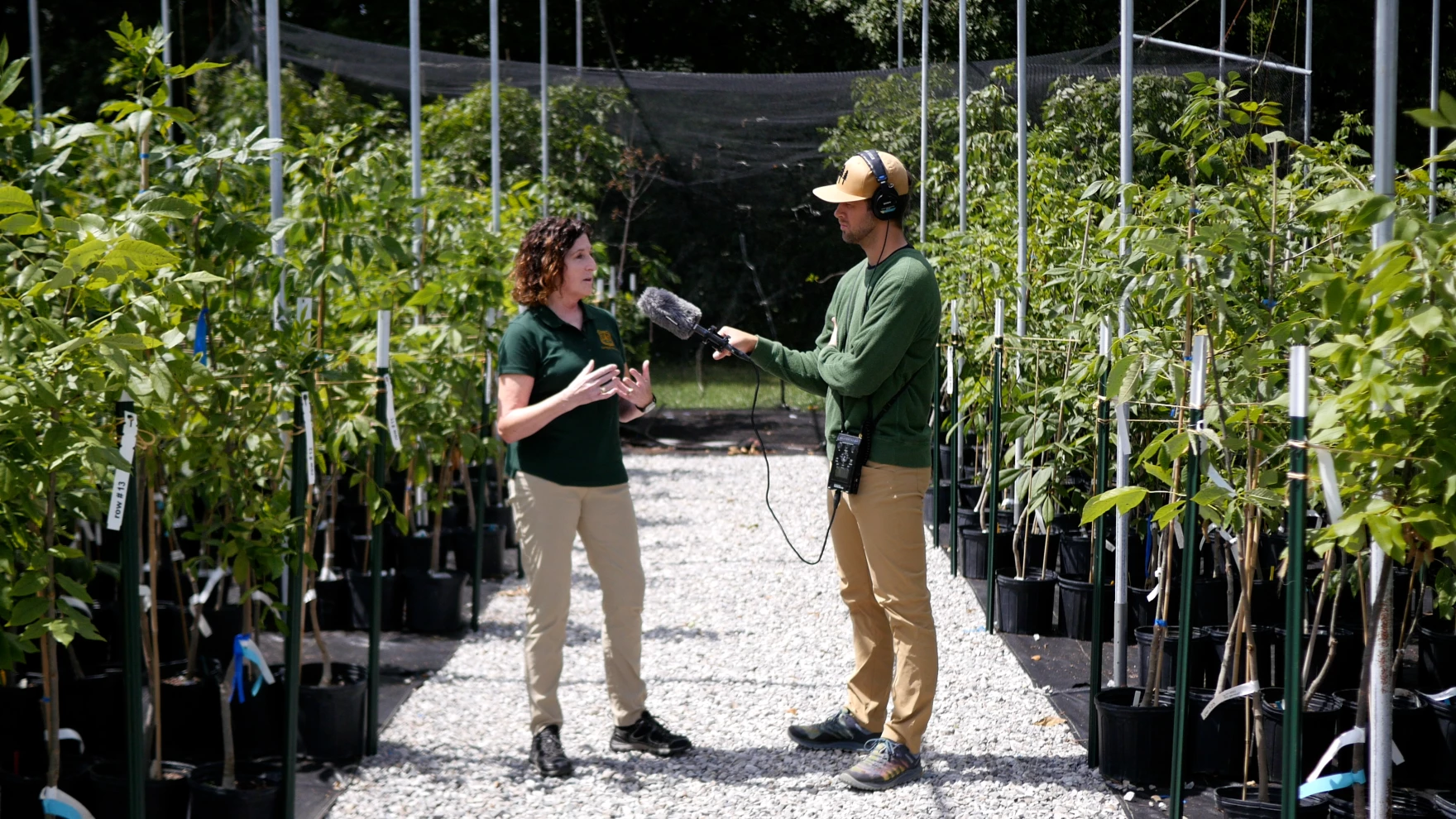
Jennifer Koch, a geneticist with the United States Forest Service, talking with Points North host Dan Wanschura. (credit: Nick Loud/The Boardman Review)
WANSCHURA: That’s when Jennifer starts thinking they might actually be on to something here. The emerald ash borer is really good at finding mature ash. It’s not like the bugs are just missing certain trees.
So Jennifer and her team come up with a hypothesis: And that is some ash trees in North America have a genetic resistance to the emerald ash borer. Basically, the ability to fight off EAB. But, Jennifer says, that’s just the hypothesis. They need more data.
KOCH: We’re scientists, so we’re skeptical.
WANSCHURA: They come up with a term for these trees that’s cautious but hopeful: lingering ash.
KOCH: It’s kind of like, you know, that last person that leaves the party, they just linger. And you’re just like, ‘Well, what are you doing here still?’
WANSCHURA: Kathleen Knight keeps looking for even more of these lingering ash trees. She finds them in parts of Ohio and Michigan, and takes branches from these trees back to Jennifer Koch’s lab. There, Jennifer clones them and runs tests to see if there’s genetic resistance.
And she discovers something amazing. These trees not only have resistance to the emerald ash borer, they actually kill EAB larvae. Scientists really didn’t see that coming.
KOCH: The mantra at the time was no co-evolution, no resistance. Meaning that since this insect was from a whole nother continent, and our trees didn’t grow up exposed to them, that they didn’t evolve any sort of mechanisms to defend themselves.
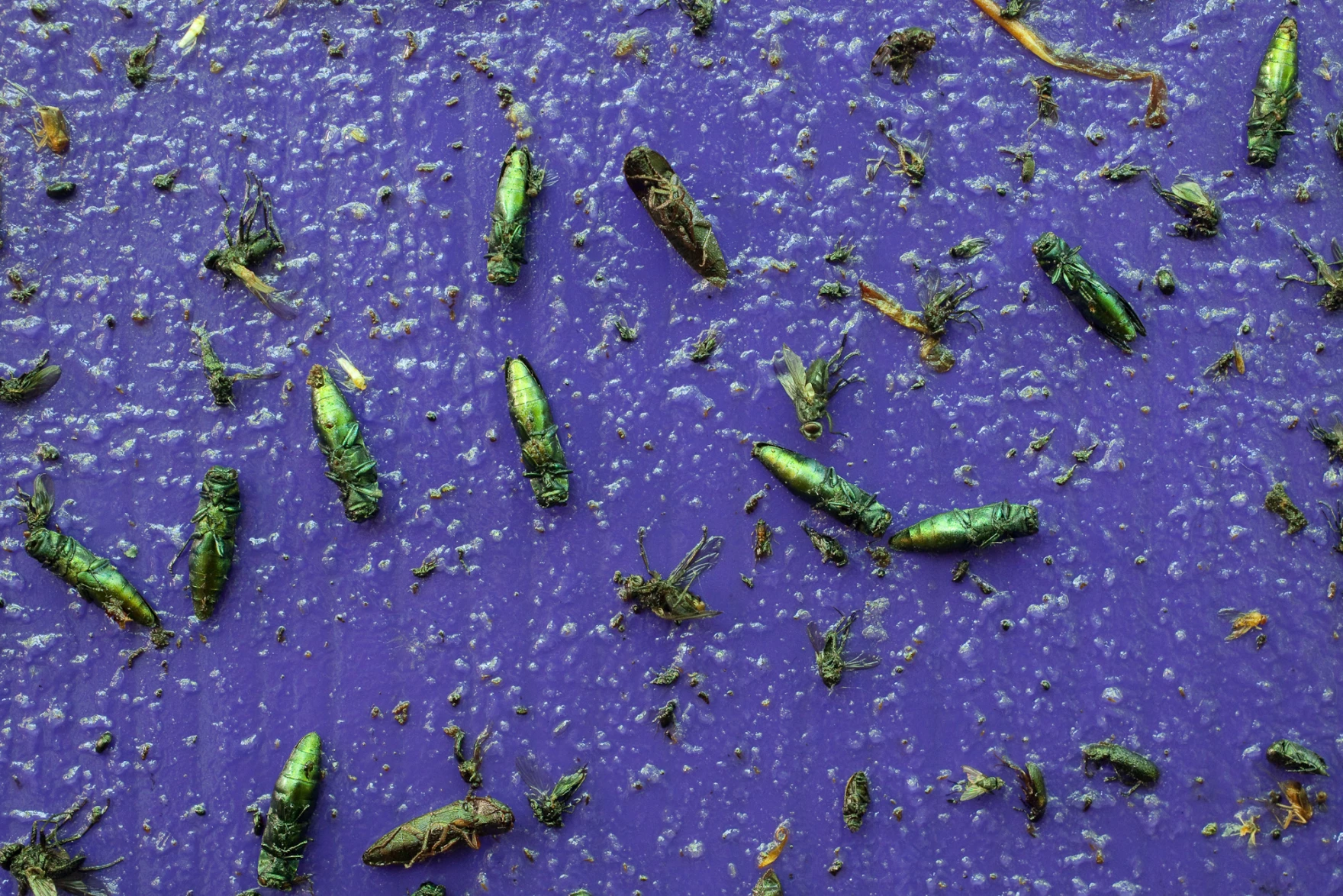
Emerald ash borers stuck on a United States Forest Service trap. (credit: Bob Klips/Ohio State University)
WANSCHURA: Scientists don’t know exactly what genetic trait gives these ash trees resistance to EAB, but they do know the resistance is on a spectrum. Some trees have more of it than others. But in order to prove their hypothesis, Jennifer still has to find out if the genetic resistance is passed down from parent to offspring.
KOCH: Because that is the key piece of information you have to have to know that breeding is actually going to work.
WANSCHURA: So, Jennifer and her team clone a bunch of different lingering ash. They cross-breed them in the lab and then wait for them to produce their own seedlings. Not only do they get seedlings that are resistant to this bug, they get seedlings that are MORE resistant than their parents.
KOCH: So now we’re really starting to get excited. I mean, I shouldn’t say starting to get excited, but now, now we’re convinced. We’re close enough to being convinced.
WANSCHURA: And that means their hypothesis is right. Resistance to the emerald ash borer is genetic in some ash trees in North America.

Jennifer Koch with Dan Wanschura in an ash tree test orchard in Delaware, Ohio. (credit: Nick Loud/The Boardman Review)
Then comes the big task. Actually saving the trees. Jennifer needs to create an entire orchard of resistant ash to prove her lab results out in the field. Her team will harvest the seeds from the most resistant trees and grow them into seedlings.
Eventually those seedlings will be planted in forests across the region. Jennifer says that could happen in the next decade. This entire process can be replicated, helping spread resistant ash all across the continent.
KOCH: We’re working with trees from Ohio and Michigan, so I can’t take those trees and the resistancy they produce and plant them all the way down to Mississippi. They won’t be adapted to grow there. So we have to do what we’re doing over and over to make seed orchards for each separate region.
(sounds of walking in the woods)
WANSCHURA: Back in a forest in central Ohio, Kathleen Knight, the ecologist, continues to look for lingering ash today. She spots a couple trees and walks up to them.
KNIGHT: More than half of the canopy looks great. And then there’s another tree right here to our left that also has a good healthy canopy. These are two that I’m hoping will make it through the second wave and continue to survive.

A healthy lingering ash tree in Seymour Nature Preserve in Delaware, Ohio in 2020. (credit: Kathleen Knight/United States Forest Service)
WANSCHURA: Kathleen is quick to point out, in order to save the species across North America, they can’t search for lingering ash alone.
KNIGHT: We need other people out there who are in the forest, keeping an eye open, looking for large, surviving, healthy ash trees. … Because there’s not enough of us to survey every forest. And there are a lot of important trees out there that could be missed if people aren’t watching for them.
WANSCHURA: One way to do that is with an app called TreeSnap. Anyone can use it to report what they think might be a surviving ash. Scientists like Kathleen can then see that info and use it in their research.
(sounds of walking in the woods)
Despite it sometimes feeling like an uphill battle, Kathleen is optimistic about the future of ash trees.
KNIGHT: I mean, that’s what gets me out of bed every day, is that the work is really important. We’re literally working to save … trees.
WANSCHURA: And not just the ash tree; other species too. Because more catastrophic pests are going to come along, and now scientists will know – look for genetic resistance – and those trees could also be saved.
Editor’s note:
For this episode, we teamed up with The Boardman Review to produce a short film on the efforts of Kathleen Knight and Jennifer Koch to find, breed, and restore resistant ash trees. Stay tuned to our Instagram page for a trailer and info on when you can watch the film in its entirety.
Catch more news at Great Lakes Now:
Points North: Labor of Mixed Emotions
Points North: A Natural Ending
Featured image: A very healthy lingering ash tree at Seymour Nature Preserve in Delaware, Ohio in 2020. (credit: Kathleen Knight)




